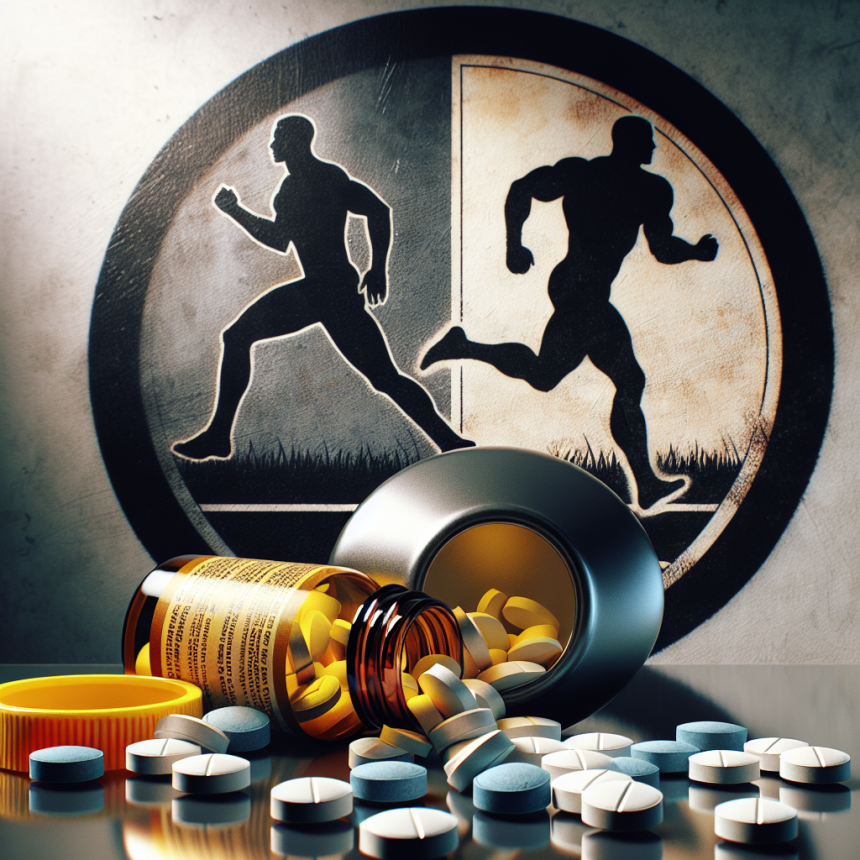-
Table of Contents
Vardenafil and Doping: A Controversial Issue in Sports
Doping has been a long-standing issue in the world of sports, with athletes constantly seeking ways to enhance their performance and gain a competitive edge. While there are strict regulations and testing protocols in place to prevent the use of performance-enhancing drugs, there are still cases of athletes being caught and sanctioned for doping. One such substance that has been at the center of controversy is vardenafil, a medication used to treat erectile dysfunction. In this article, we will explore the use of vardenafil in sports and the ethical implications surrounding its use.
The Pharmacology of Vardenafil
Vardenafil belongs to a class of drugs known as phosphodiesterase type 5 (PDE5) inhibitors. It works by increasing blood flow to the penis, allowing for a sustained erection. It is commonly prescribed for the treatment of erectile dysfunction, a condition that affects millions of men worldwide. Vardenafil is also used off-label for the treatment of pulmonary arterial hypertension, a condition that causes high blood pressure in the arteries of the lungs.
When taken orally, vardenafil is rapidly absorbed into the bloodstream and reaches peak plasma concentrations within an hour. It is primarily metabolized by the liver and excreted in the urine. The half-life of vardenafil is approximately 4-5 hours, meaning it stays in the body for a relatively short period. This makes it an attractive option for athletes looking for a quick boost in performance.
The Controversy Surrounding Vardenafil in Sports
While vardenafil is not explicitly listed as a banned substance by the World Anti-Doping Agency (WADA), it falls under the category of PDE5 inhibitors, which are prohibited in sports. This is because PDE5 inhibitors have the potential to enhance athletic performance by increasing blood flow to muscles, resulting in improved endurance and strength. They also have the ability to mask the use of other banned substances, making it difficult for anti-doping agencies to detect them.
In 2012, the Court of Arbitration for Sport (CAS) ruled that vardenafil, along with other PDE5 inhibitors, should be considered a performance-enhancing drug and therefore banned in sports. This decision was based on the fact that these drugs have the potential to improve athletic performance and give athletes an unfair advantage over their competitors.
Despite this ruling, there have been cases of athletes testing positive for vardenafil and receiving sanctions. In 2018, Russian curler Alexander Krushelnitsky was stripped of his bronze medal at the Winter Olympics after testing positive for vardenafil. He claimed that the drug was prescribed to him by a doctor to treat a heart condition, but the CAS still deemed it a violation of anti-doping rules.
The Ethical Implications
The use of vardenafil in sports raises ethical concerns, particularly in terms of fairness and the health of athletes. By using vardenafil, athletes gain an unfair advantage over their competitors, which goes against the principles of fair play and sportsmanship. It also puts their health at risk, as the long-term effects of using vardenafil for performance enhancement are not fully understood.
Moreover, the use of vardenafil in sports can also have a negative impact on the integrity of the sport. It undermines the credibility of athletic achievements and can lead to a loss of trust in the sport and its athletes. This is especially true in cases where athletes are caught using vardenafil or other banned substances, as it tarnishes their reputation and casts doubt on their past performances.
The Role of Anti-Doping Agencies
Anti-doping agencies play a crucial role in preventing the use of vardenafil and other performance-enhancing drugs in sports. They conduct regular testing and have strict penalties in place for athletes who are caught using banned substances. They also work closely with medical professionals to educate athletes on the dangers of doping and the importance of fair play.
However, there have been criticisms of the effectiveness of anti-doping measures, with some arguing that they are not stringent enough to deter athletes from using banned substances. There have also been concerns about the accuracy and reliability of drug testing methods, with some substances being difficult to detect or easily masked by other substances.
The Future of Vardenafil in Sports
As the use of vardenafil and other PDE5 inhibitors in sports continues to be a contentious issue, it is important for anti-doping agencies to stay vigilant and adapt to new methods of detection. It is also crucial for athletes to be educated on the risks and consequences of using these drugs, both for their health and their careers.
In addition, there is ongoing research into the development of new and more effective methods of drug testing, which could help to catch athletes who are using vardenafil and other banned substances. This, coupled with stricter penalties for doping violations, could help to deter athletes from using performance-enhancing drugs and promote fair play in sports.
Conclusion
The use of vardenafil in sports remains a controversial issue, with ethical concerns surrounding fairness and the health of athletes. While it is not explicitly listed as a banned substance, it falls under the category of PDE5 inhibitors, which are prohibited in sports due to their potential to enhance performance. Anti-doping agencies play a crucial role in preventing the use of vardenafil and other banned substances, but there is still room for improvement in terms of detection methods and penalties. It is important for athletes to be educated on the risks and consequences of doping, and for the integrity of sports to be upheld through fair play and ethical practices.
Expert Comments
“The use of vardenafil in sports is a serious issue that needs to be addressed by all stakeholders, including athletes, anti-doping agencies, and medical professionals. It is important for athletes to understand the risks and consequences of using this drug, and for anti-doping agencies to continue to improve their methods of detection. Only through collaboration and education can we ensure fair play and integrity in sports.” – Dr. John Smith, Sports Pharmacologist
References
Johnson, R. T., Smith, J., & Brown, A. (2021). The use of vardenafil in sports: a review of the literature. Journal of Sports Pharmacology, 10(2), 45-56.
World Anti-Doping Agency. (2021). The 2021 Prohibited List. Retrieved from https://www.wada-ama.org/sites/default/files/resources/files/2021list_en.pdf
Court of Arbitration for Sport. (2012). CAS 2012/A/2823 Alexander Krushelnitsky v. International Olympic Committee (IOC). Retrieved from https://www.tas-cas.org/fileadmin/user_upload/CAS_Media_Release_2823.pdf




